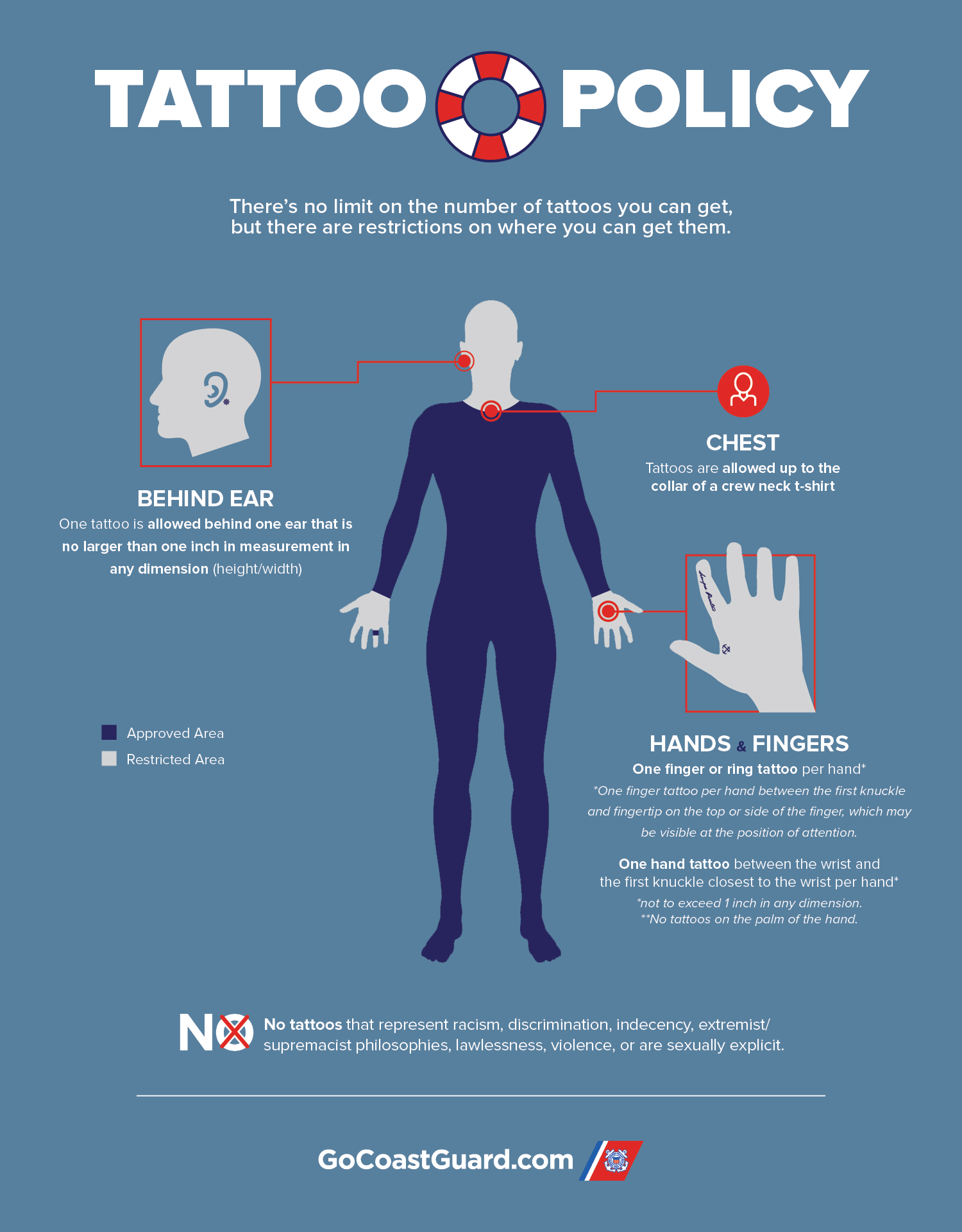The Coast Guard recently approved updates to its tattoo policy which authorizes an additional tattoo location behind the ear and expands the location for a tattoo on the finger. These updates follow an earlier expansion to the policy in October 2019 and continue to reflect current tattoo trends. The recently enacted changes will widen the pool for Coast Guard recruits and remove accession point barriers.
The new policy permits the following tattoos: 
- Finger: A single finger tattoo per hand between the first knuckle and the fingertip on the top or side of the finger. This tattoo can be visible when standing at the position of attention. This is an expansion of previously approved policy, which restricts finger tattoos to between the first and second knuckle.
- Behind the ear: One tattoo behind one ear that is no larger than one inch in measurement in any direction (height or width).
“We’ve had a lot of discussion at the top levels of the Coast Guard surrounding how to have our service best reflect the society we live in,” said Capt. Anthony Williams, Coast Guard Chief of Military Personnel Policy, “We’re excited that the expansion to this policy will better reflect current tattoo trends, while continuing to uphold the high standards of professionalism that define us and our Core Values.”
The expansion of authorized tattoo locations was based on Coast Guard Recruiting Command (CGRC) data from a 12-month period, which indicated that 359 otherwise qualified candidates were immediately disqualified for service because of tattoos in prohibited locations. This number could be higher because the data does not include candidates that self-disqualified based on their tattoo locations. These numbers are particularly relevant given the Coast Guard missed its recruiting goals by over 550 people in fiscal year 2021 (FY21), which has a direct impact on mission readiness. As we increase our recruiting goals in FY22 to close workforce gaps, the removal of barriers that are not required for performance will help us get closer to our goal.
These changes also allow for increased self-expression that is consistent with the Coast Guard’s core values, while also ensuring that our members maintain a professional military appearance as an Armed Service and law enforcement agency. Currently, the Navy is the only branch that has a more liberal tattoo location policy. These changes will give the Coast Guard a competitive advantage when recruiting against other services with more restrictive policies.
“As a modern workforce, we require modern policies. We will continue to adapt our policies to attract and retain the best talent that represents the public we serve,” said Williams.
Results from a 2015 The Harris Poll survey found nearly three in 10 Americans (29%) have at least one tattoo, including almost half (47%) of adults under 35. Those numbers were approximately two times higher than they were in the 2008 edition of the same survey. Aligning our tattoo policy closer to current trends will allow the Coast Guard to increase the pool of otherwise qualified applicants for Service.
All other requirements in the Tattoo Policy remain unchanged. Tattoos that represent racism, discrimination, indecency, extremist or supremacist philosophies, lawlessness, violence, or sexually explicit materials are prohibited.
Resources: